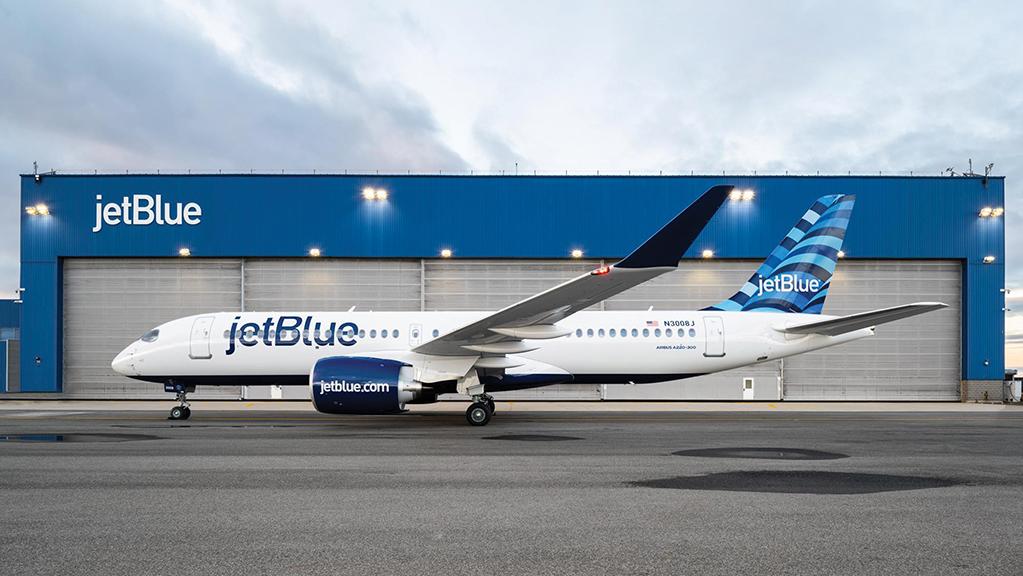
Since acquiring a majority stake in the Bombardier C Series in 2018, Airbus has sought to further establish the program as a player in the narrowbody regional aircraft segment. Built as a competitor to the larger Embraer E-Jet E2 and smaller variants of Boeing 737 MAX-7, the A220’s market penetration has been modest, given the fledgling status of the program, launched in 2005. As of March, 258 A220s were in service, according to Aviation Week Network’s Commercial Fleet & MRO Forecast data.
After the slowing of production at the height of the COVID-19 crisis in 2020, the A220 has benefited from the gradual market recovery, with several orders placed by airlines and lessors in the past year. Much of the operational activity centers on North America and Europe, with Delta Air Lines flying 54 A220s, followed by Latvia’s AirBaltic (33), Swiss International Air Lines (30) and Air Canada (27). Outside of North America and Europe, EgyptAir operates the largest number, 12.
While the pandemic crisis undoubtedly has slowed the growth of the program for a short period, the long-term outlook for the A220 could be promising, given its unique position as the only aircraft built for the 100-150-seat market, as most airlines are looking to rebound through regional travel markets. The global A220 fleet is projected to increase at a compound annual growth rate (CAGR) of 17% in 2022-31, with several large orders already in place. These include U.S. startup airline Breeze Airways with an 80-aircraft order, Delta Air Lines scheduled to take another 41 as part of a 95-unit order and Air Lease Corp. committed to 75 aircraft.
JetBlue Airways, which has a fleet of eight aircraft, has the largest future A220 order in place. Having taken its first delivery of the aircraft in December 2020, the New York City-based airline has commitments for 100 A220s in total, earmarked as long-term replacements for its outgoing Embraer 190 fleet, scheduled for retirement by 2026. Italia Trasporto Aereo (ITA Airways), an Italian government startup replacement for defunct flag carrier Alitalia, firmed up an order for seven A220s at the end of last year, while Air Canada has reversed plans to cancel 12 A220 orders.
Given the projected increase in the global A220 fleet size, aftermarket specialists are building up capability for the related maintenance demand. Aviation Week forecast data estimates a CAGR of 26.8% in 2022-31 for A220 aircraft, with $7.4 billion in MRO spending predicted for that 10-year period.
AFI KLM Engineering & Maintenance is one MRO seeing opportunity in the A220 market, in part influenced by its AFI-KLM parent airline having an existing order for 60 A220s dating back to 2019. Last year, the company built up capability for the aircraft specifically in the component repair segment by announcing inventory investment, along with additional engineering services to support operations. Additionally, its EPCOR subsidiary, which specializes in auxiliary power units (APU) and pneumatic component repairs, added coverage for the APU GTCP131-9C equipping the A220.
Airbus, keen to further grow its own MRO footprint, is also making a strong play in the program’s component aftermarket via its Flight-Hour Services (FHS) offering. In the past year, it has added its first FHS agreement in North America with JetBlue for the A220, providing material services with on-site parts stock management, access to the parts pool, engineering and repair services.
Existing A220 airline operators with third-party services capability are also expanding their offerings. AirBaltic, Europe’s largest A220 operator and one of the aircraft’s launch customers in 2016, has plans to build a new facility in Riga, Latvia, which will maintain its own fleet along with A220s operated by other airlines.
The past year has also seen MRO activity for the aircraft’s engine, the Pratt & Whitney PW1500G geared turbofan. The engine reached the one-million-flight-hour milestone last April, yet the program remains in its infancy, and an uptick in shop visit activity is some way off, according to Aviation Week data. Aviation Week predicts the first PW1500G shop visit will take place in 2024, and shop visits will increase slowly up to 2028. The following year is expected to be when the surge in PW1500G shop visits occurs, with 128 estimated in 2029.





